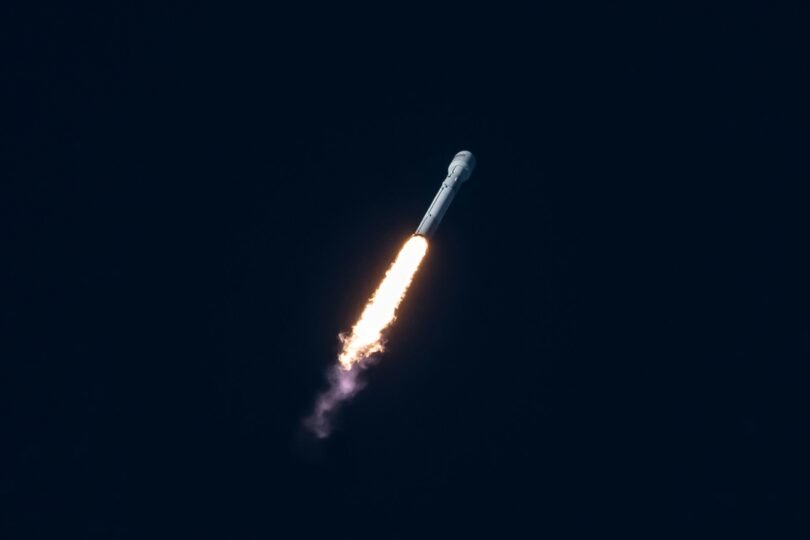Introduction
Rocket staging is one of the most critical concepts in spaceflight. Without it, reaching orbit efficiently would be almost impossible with current technology. Staging allows rockets to shed unnecessary weight during their ascent, improving fuel efficiency and enabling payloads to achieve the high velocities required for orbital insertion. In this article, we will explore what rocket staging is, why it is essential, the types of staging used in modern rocketry, its historical evolution, and how future advancements may change the way we think about space launches.
What is Rocket Staging?
At its core, rocket staging is the process of dividing a rocket into multiple sections, or “stages,” each with its own engines and propellant. As a rocket climbs higher and burns its fuel, each stage completes its task and is then jettisoned. This process reduces the mass of the rocket, allowing the remaining stages to accelerate more efficiently.
In a single-stage rocket, the entire vehicle must carry its full mass (engines, fuel, payload, and structure) throughout the entire journey. This is highly inefficient because most of the fuel is consumed just to lift the heavy, empty tanks and engines that are no longer useful. By contrast, a multi-stage rocket discards these empty components along the way.
The Physics Behind Rocket Staging
To understand why staging is necessary, we must consider the rocket equation formulated by Konstantin Tsiolkovsky. It states:
Where:
- is the change in velocity required for the mission.
- is the effective exhaust velocity of the rocket engine.
- is the initial total mass (rocket, fuel, payload).
- is the final mass after fuel is burned.
To reach low Earth orbit (LEO), a spacecraft typically needs about 7.8 km/s of orbital velocity, plus additional velocity to overcome gravity and atmospheric drag, bringing the total to roughly 9.3–10 km/s. Achieving this with a single stage would require an unrealistic fuel-to-mass ratio.
Staging allows the rocket to reset this ratio multiple times, discarding dead weight and making each subsequent stage more efficient.
Types of Rocket Staging
Rocket staging comes in different configurations, each with its own advantages and trade-offs.
1. Serial Staging
This is the most common type, used in rockets like the Saturn V, Falcon 9, and Soyuz. In serial staging, stages are stacked on top of each other. The first stage fires and is jettisoned, followed by ignition of the next stage, and so on.
2. Parallel Staging
In parallel staging, multiple boosters ignite together with the core stage, providing additional thrust at liftoff. Once their fuel is depleted, the side boosters detach while the core stage continues. A famous example is the Space Shuttle’s Solid Rocket Boosters or the Falcon Heavy’s side boosters.
3. Stage-and-a-Half
This method, used by the Atlas rockets in the early space age, involves dropping only part of the propulsion system—typically engines or fuel tanks—while the main core continues to operate.
4. Air-Launched Staging
In this approach, a rocket is carried by an aircraft to high altitude and then released. This reduces the energy required to escape the dense lower atmosphere. Virgin Orbit’s LauncherOne and Pegasus rockets utilize this concept.
Read More: The Science Behind Rocket Propulsion
Advantages of Staging
1. Mass Efficiency
The most significant advantage of staging is mass reduction. Every kilogram of unused structure left behind during ascent is a kilogram that does not need to be accelerated to orbital velocity.
2. Higher Payload Capacity
By improving fuel efficiency, staged rockets can carry more payload for the same amount of fuel compared to single-stage designs.
3. Optimized Engine Performance
Different rocket stages can be optimized for their operating environments: lower stages for high-thrust atmospheric flight, and upper stages for efficient operation in the vacuum of space.
Historical Examples of Rocket Staging
The Saturn V
The iconic Saturn V, used for the Apollo missions, was a three-stage rocket. Its first stage (S-IC) provided the thrust to escape Earth’s lower atmosphere, the second stage (S-II) carried the vehicle into near-orbital altitude, and the third stage (S-IVB) performed the final orbital insertion and trans-lunar injection.
Space Shuttle
Though not a traditional multi-stage rocket, the Space Shuttle used parallel staging with its two solid rocket boosters and the external fuel tank, which detached once empty.
Falcon 9
SpaceX’s Falcon 9 is a two-stage rocket, but it revolutionized staging by making the first stage reusable. Instead of discarding it permanently, the booster returns to Earth for refurbishment and relaunch.
The Challenge of Single-Stage-to-Orbit (SSTO)
Some have proposed creating a single-stage-to-orbit (SSTO) vehicle to eliminate the complexity of staging. However, achieving SSTO with chemical rockets remains highly challenging because of the mass fraction requirements dictated by the rocket equation. While theoretically possible, it leaves little room for payload, making it economically impractical with current materials and propulsion technology.
Modern Innovations in Staging
Reusable Stages
The most significant advancement in recent years is the reusability of stages, pioneered by SpaceX and being pursued by Blue Origin and others. Reusing stages reduces launch costs dramatically while retaining the benefits of multi-staging.
Modular Staging
Companies are exploring modular rocket designs, where multiple identical boosters can be attached or detached based on mission requirements.
Hybrid Staging Concepts
Future concepts may involve mixing traditional chemical propulsion with air-breathing engines or spaceplanes that handle the first stage, reducing the need for heavy lift-off structures.
Future of Rocket Staging
The future of rocket staging will likely involve a combination of reusability, advanced materials, and potentially non-chemical propulsion. Nuclear thermal engines, ion propulsion, or even space elevators (if developed) could reduce our reliance on traditional staged rockets. However, until such technologies mature, staging remains the most practical method for reaching orbit.
Conclusion
Rocket staging is not just a design choice—it is the key enabler for all modern spaceflight. By shedding weight in stages, rockets achieve the tremendous velocity needed to reach orbit while carrying useful payloads. From the earliest multistage designs to the reusable boosters of today, staging has been the foundation of our ability to explore space. As technology evolves, staging methods may change, but the principle will remain a cornerstone of space launch systems for the foreseeable future.







